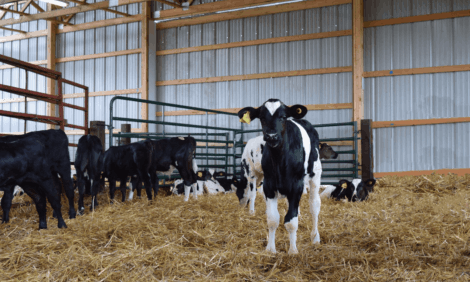



Phosphorous In Wheat Can Be Improved
We now know why some cereals have higher phytase levels and, thanks to researchers at Aarhus University, how to makes it more readily available.
We face a dilemma, writes Janne Hansen, communications officer for Aarhus University. On the one hand, an excess of phosphorus is bad for the environment. On the other, it is necessary to add phosphorus to livestock feed because it is a vital nutrient. The undigested profits end up in the environment through manure.

To make matters worse, phosphorus is a very limited resource, which is estimated to last only for another 30-70 years. However plant seeds contain large amounts of phosphorus, and if it was possible to increase the availability of this phosphorus to livestock, it would not only benefit the environment but also reduce our use of this scarce resource, advises associate professor Henrik Brinch-Pedersen, researcher at Aarhus University.
Henrik Brinch-Pedersen and his colleagues have attempted to increase the content of the enzyme phytase for a more efficient use of the phosphorus in the feed. But what is the connection between phytase and phosphorus?
Phytase Renders Phosphorus Available for Digestion
Cereal forms an important part of animal feed. Cereal grains contain around 2-5 per cent phosphorus, but unfortunately this phosphorus is chemically bonded with phytic acid very tightly, meaning it is difficult for animals to digest. This is where phytase comes in.
Phytase is important for the utilisation of phosphorus and other minerals bound in plant seeds as it hydrolyses phytic acid and releases the phosphorus for assimilation. Animals and humans have no natural phytase activity in their digestive system and very few plant seeds contain sufficiently high phytase levels, so scientists and plant breeders have tried to remedy this.
For a number of years scientists have been trying to increase phytase levels in cerels. In wheat, barley, rye and triticale we see large variations within species, and also between species. Rye contains phytase both in the shoots and in the ripened grain. Rice and maize, on the other hand, contain virtually no phytase in the grain, only in the shoots, explains Henrik Brinch-Pedersen.
Historic Split
This difference is due to a split of cereals into two different cereal families way back in ancient history. By studying the genome of the most important cereal – wheat – the scientists found that wheat contains a gene that in addition to coding for phytase in the shoots also codes for the generation of phytase in ripened grain. Rice and maize do not contain this gene.
- It is now understood why some cereal species contain phytase activity in the grain. Furthermore, scientists have found that this can not be acheived by ordinary plant breeding alone. Scientists are now screening a number of triticale species and have discovered and demonstrated how to genetically produce a wheat with a phytase content on level with rye. This wheat hybrid, which has been named HighPhy, has been patented and sold to an English company for propagation.
- Phytic acid also bonds with other minerals in the digestive system, preventing them from being assimilated. This is a particular problem in developing countries where the diet is dependent on a single staple such as rice, maize or sorghum that contain virtually no phytase. This can lead to deficiencies in micro-nutrients such as iron and zinc, concludes Henrik Brinch-Pedesen.
May 2013


